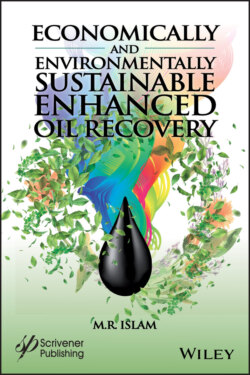Читать книгу Economically and Environmentally Sustainable Enhanced Oil Recovery - M. R. Islam - Страница 36
2.5.2 The Finite/Infinite Conundrum
ОглавлениеThe next assumption of peak oil theory is that the oil reserve is finite. The theory first assumes the ultimate recoverable reserve, then expresses cumulative oil production as a function of the ultimate recoverable reserve. Cavallo (2004) defines the Hubbert curve used to predict the U.S. peak as the derivative of:
(2.7)
Where Q(t) is the cumulative oil production and Qmax is the maximum producible reserve and a and b are constants. The year of maximum annual production (peak) then back is calculated as:
(2.8)
The fixation of Qmax is in the core of the Hubbert curve. Theoretically, the recoverable reserve increases for two reasons: 1) the boundary of resource; 2) the technology. As discussed in earlier sections, the boundary of resource is continuously moving. The recent surge in unconventional oil and gas reserve makes an excellent point to this regard. In fact, the following section makes the argument that this boundary is fictitious and for a sustainable recovery scheme, this boundary should not exist. The second reason for the reserve to grow is the technology that becomes applicable to a broader resource base. The earlier section on EOR makes the argument that EOR schemes alone can continue to increase the reserve and has done so in the past.
There is a general misconception that Hubbert was concerned with “easy” oil, “easy” metals, and so forth that could be recovered without greatly advanced mining efforts and how to time the necessity of such resource acquisition advancements or substitutions by knowing an “easy” resource’s probable peak. The difficulty of Hubbert curve is not its assumption that easy oil recovery is constant, it is rather the notion that a resource that turns into reserve with time is finite. As shown in previous sections, accessing greater resource bases is not a matter of ‘more difficult’ technology, it is rather a matter of producing with sustainable techniques.
